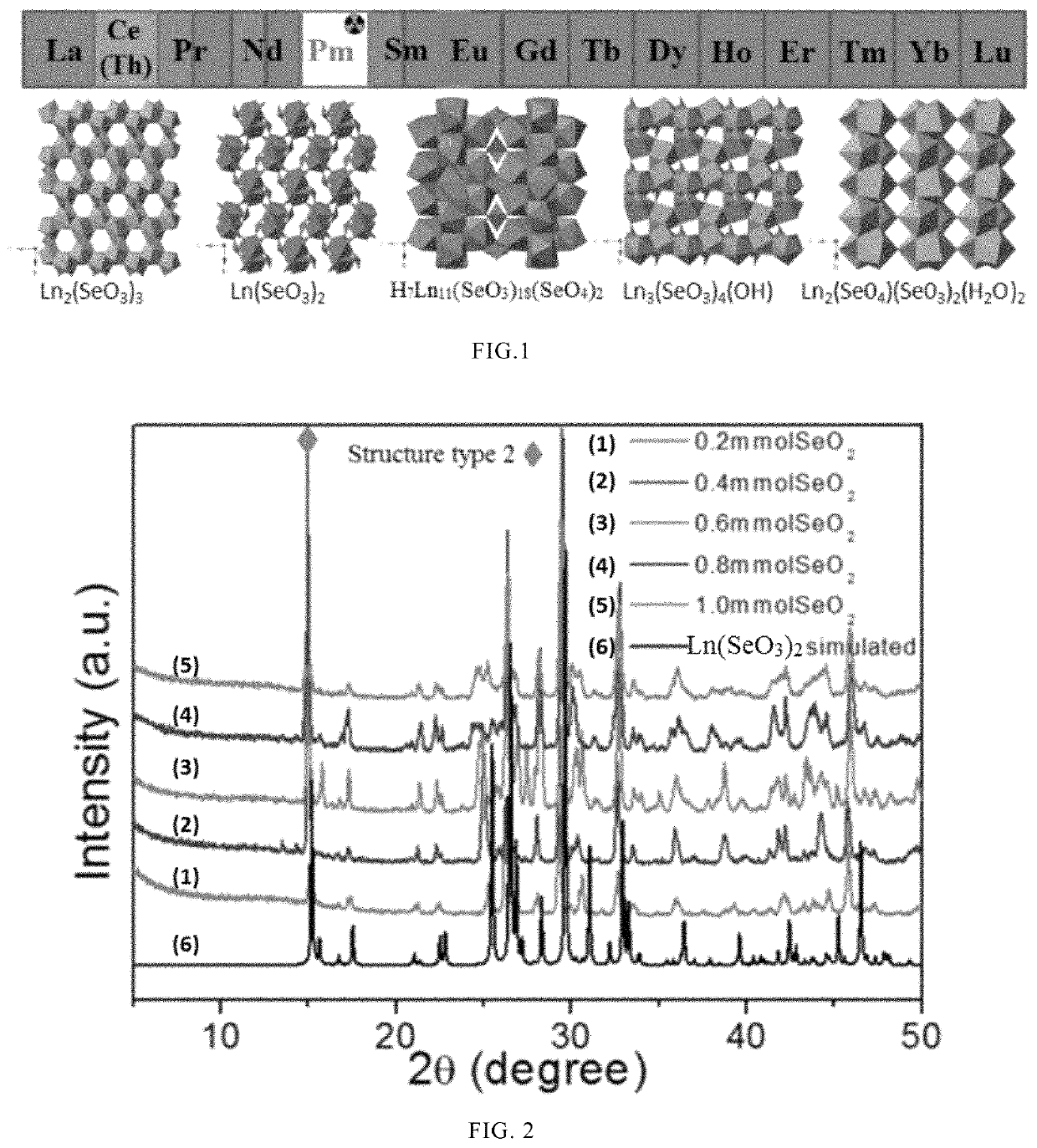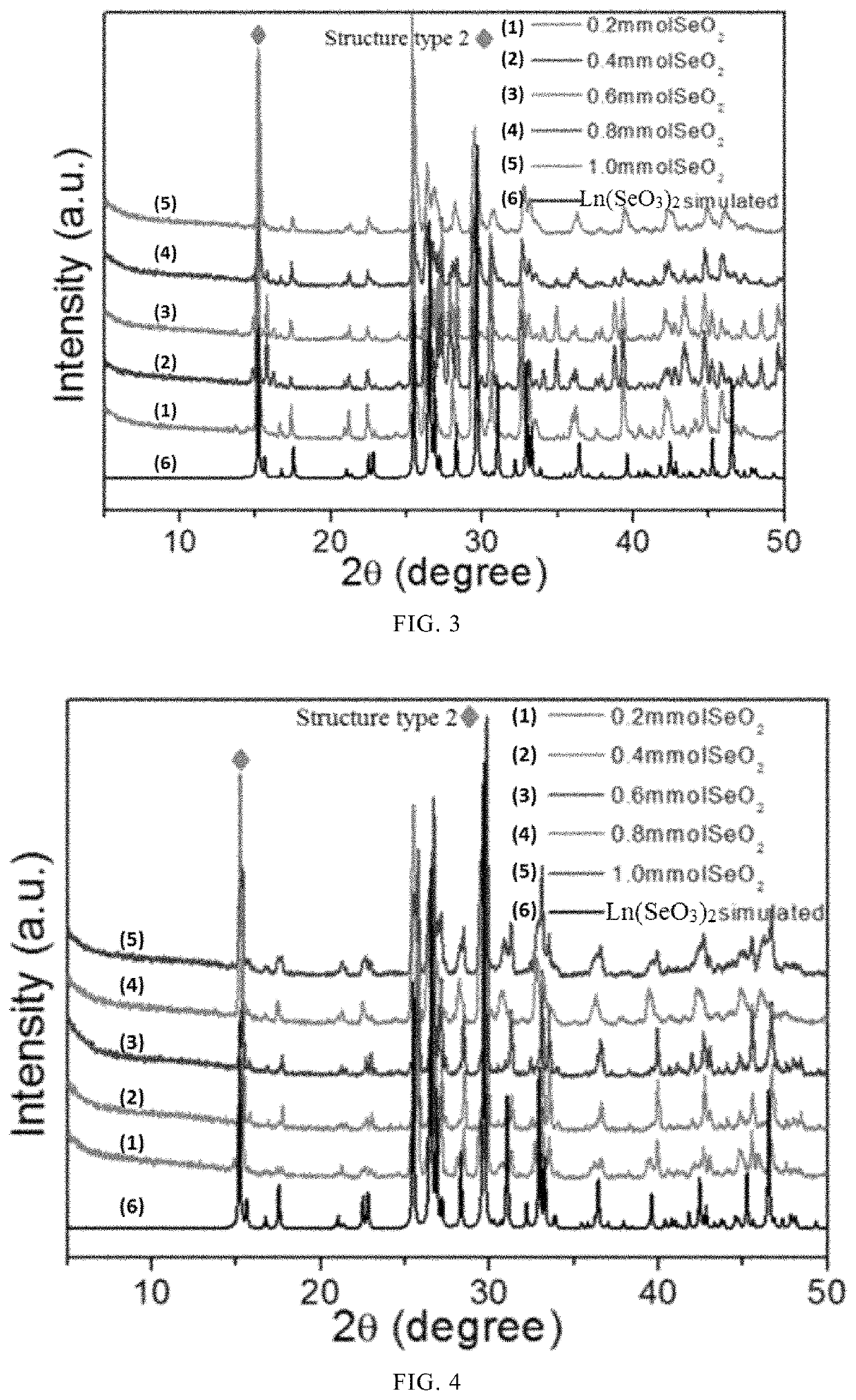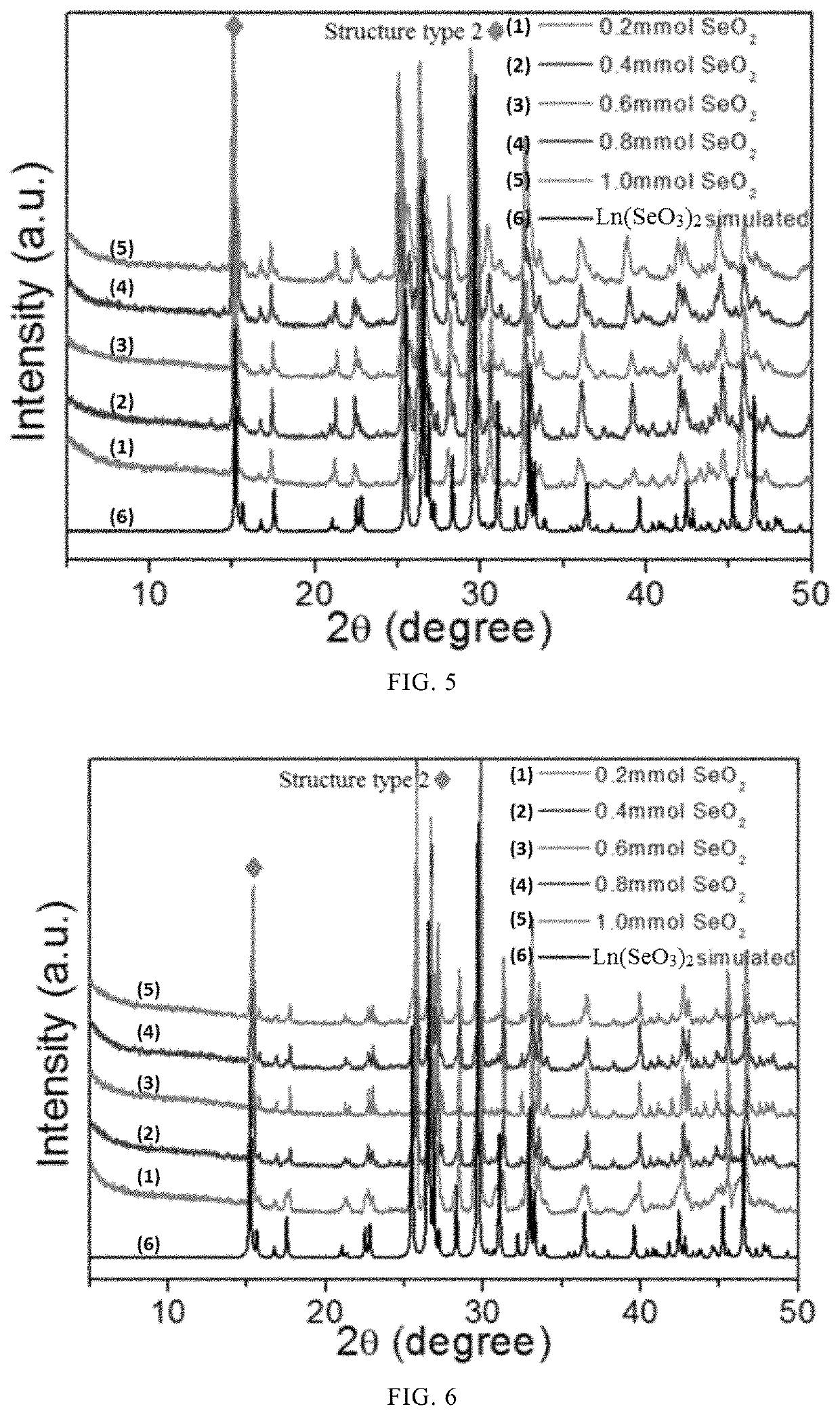Method for removing radioactive element thorium in rare earth mineral
a radioactive element and rare earth mineral technology, applied in the field of separation of elements, can solve the problems of high radiation shielding requirements for operations and devices, high requirements, and the presence of radioactive thorium seriously inhibits the industrial mining/refining process of rare earths, and achieves high separation efficiency, high selective crystallization rate of tetravalent thorium, and high separation efficiency
- Summary
- Abstract
- Description
- Claims
- Application Information
AI Technical Summary
Benefits of technology
Problems solved by technology
Method used
Image
Examples
embodiment 1
[0043]Separation of Binary Lanthanide and Actinide Elements
[0044]In this example, crystals of rare earth elements (Th(NO3)4.6H2O and La(NO3)3.6H2O) were substituted for a rare earth mineral, to verify the effect of a method for removing radioactive element thorium in a rare earth mineral of the present invention.
[0045]0.1 mmol Th(NO3)4.6H2O solid, 0.1 mmol La(NO3)3.6H2O solid, and 0.2 mmol SeO2 were placed in a 10 mL polytetrafluoroethylene reaction vessel, and 2 mL deionized water was added. The resulting mixture was sealed, heated up to a temperature of 230° C. and heated for 3 days, and then cooled at a rate of 8.3° C. / h to room temperature (20-30° C.) to give a crystal product. The crystal product was washed with deionized water and the washing solution was collected in a 10 mL centrifuge tube and diluted to volume. The resulting crystal product was washed with ethanol and 5-10% dilute nitric acid, and then allowed to dry at room temperature.
[0046]Following the forgoing method, ...
embodiment 2
[0051]Separation of Binary Lanthanide and Actinide Elements
[0052]In this example, crystals of rare earth elements (Th(NO3)4.6H2O and Eu(NO3)3.6H2O) were substituted for a rare earth mineral, to verify the effect of a method for removing radioactive element thorium in a rare earth mineral of the present invention.
[0053]0.1 mmol Th(NO3)4.6H2O solid, 0.1 mmol Eu(NO3)3.6H2O solid, and 0.2 mmol SeO2 were placed in a 10 mL polytetrafluoroethylene reaction vessel, and 2 mL deionized water was added. The resulting mixture was sealed, heated up to a temperature of 230° C. and heated for 3 days, and then cooled at a rate of 8.3° C. / h to room temperature (20-30° C.) to give a crystal product. The crystal product was washed with deionized water and a washing solution was collected in a 10 mL centrifuge tube and diluted to volume. The resulting crystal product was washed with ethanol and 5-10% dilute nitric acid, and then allowed to dry at room temperature.
[0054]Following the forgoing method, th...
embodiment 3
[0058]Separation of Binary Lanthanide and Actinide Elements
[0059]In this example, crystals of rare earth elements (Th(NO3)4.6H2O and Yb(NO3)3.6H2O) were substituted for a rare earth mineral, to verify the effect of a method for removing radioactive element thorium in a rare earth mineral of the present invention.
[0060]0.1 mmol Th(NO3)4.6H2O solid, 0.1 mmol Yb(NO3)3.6H2O solid, and 0.2 mmol SeO2 were placed in a 10 mL polytetrafluoroethylene reaction vessel, and 2 mL deionized water was added. The resulting mixture was sealed, heated up to a temperature of 230° C. and heated for 3 days, and then cooled at a rate of 8.3° C. / h to room temperature (20-30° C.) to give a crystal product. The crystal product was washed with deionized water and a washing solution was collected in a 10 mL centrifuge tube and diluted to volume. The resulting crystal product was washed with ethanol and 5-10% dilute nitric acid, and then allowed to dry at room temperature.
[0061]Following the forgoing method, th...
PUM
| Property | Measurement | Unit |
|---|---|---|
| molar ratio | aaaaa | aaaaa |
| temperature | aaaaa | aaaaa |
| temperature | aaaaa | aaaaa |
Abstract
Description
Claims
Application Information
 Login to View More
Login to View More - R&D
- Intellectual Property
- Life Sciences
- Materials
- Tech Scout
- Unparalleled Data Quality
- Higher Quality Content
- 60% Fewer Hallucinations
Browse by: Latest US Patents, China's latest patents, Technical Efficacy Thesaurus, Application Domain, Technology Topic, Popular Technical Reports.
© 2025 PatSnap. All rights reserved.Legal|Privacy policy|Modern Slavery Act Transparency Statement|Sitemap|About US| Contact US: help@patsnap.com



